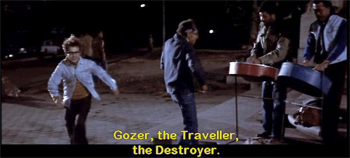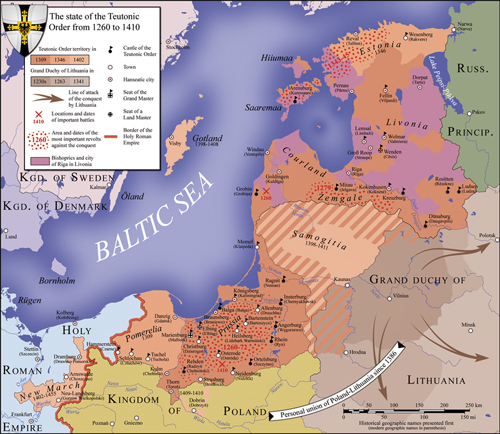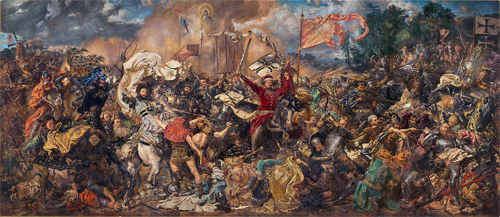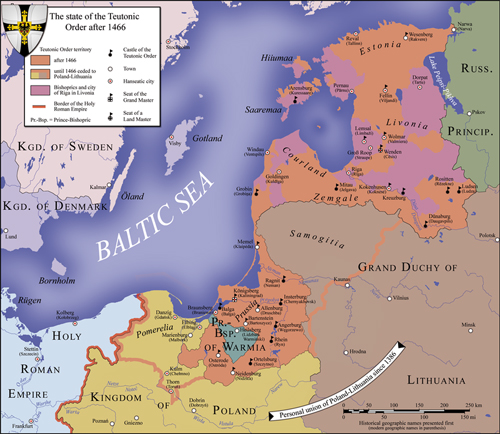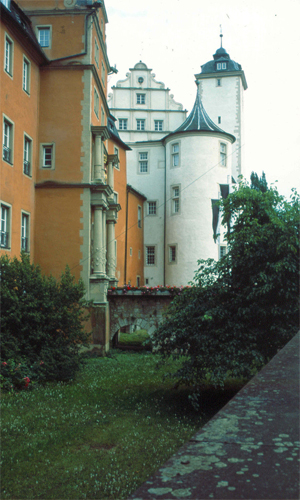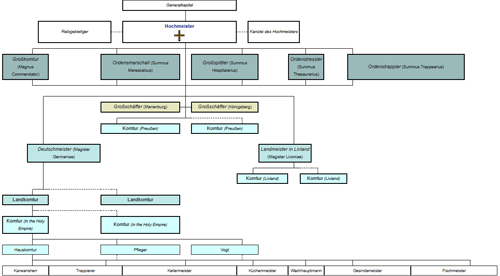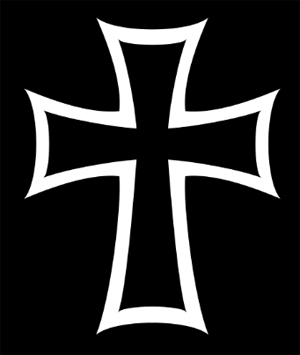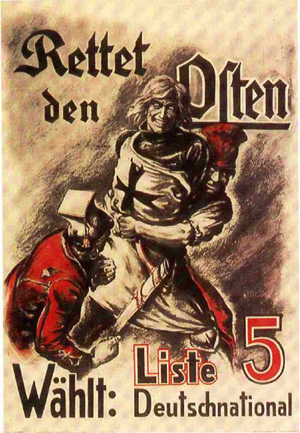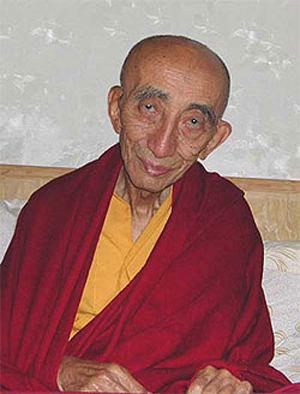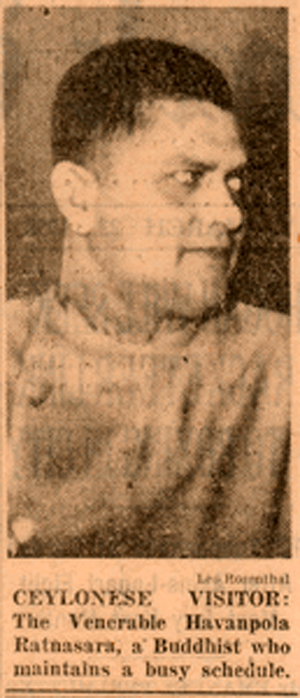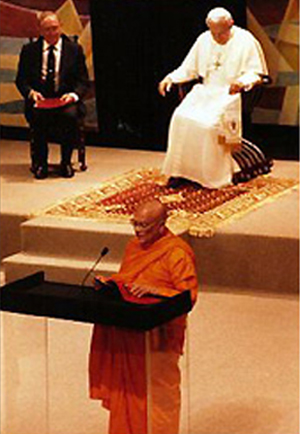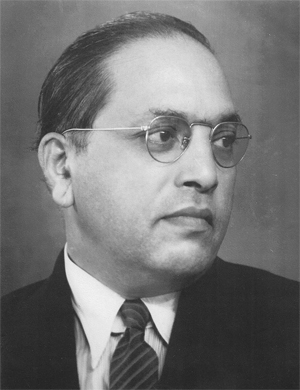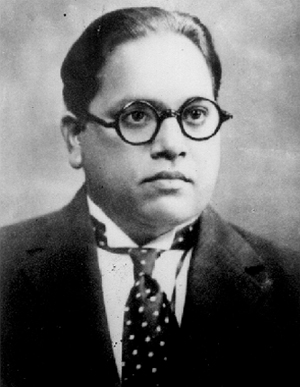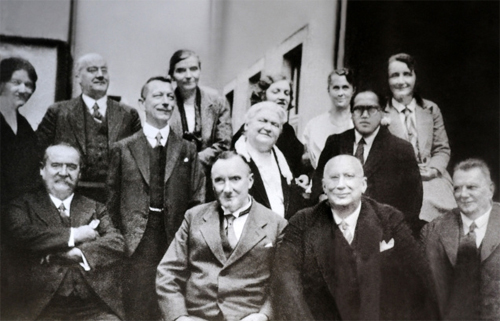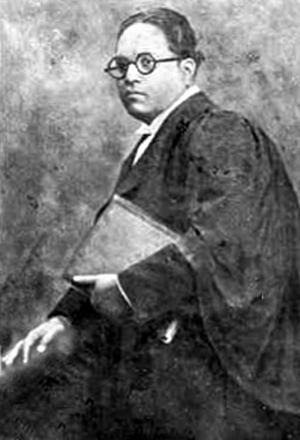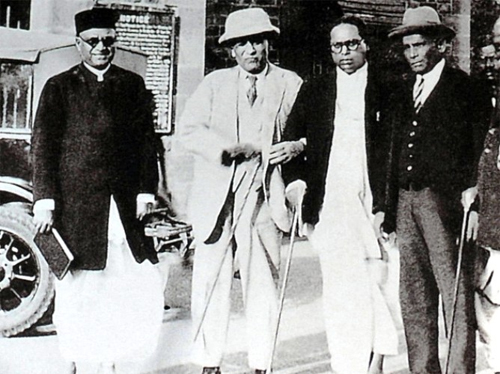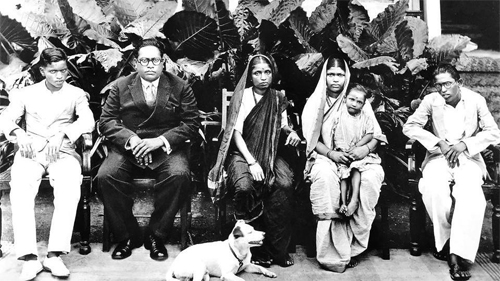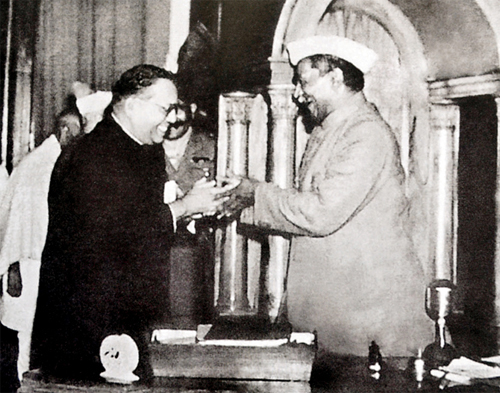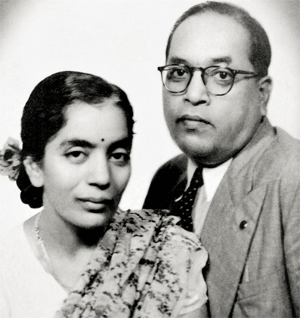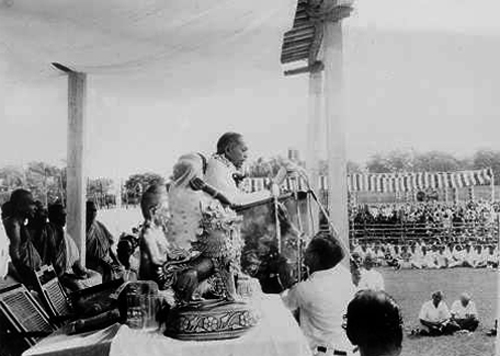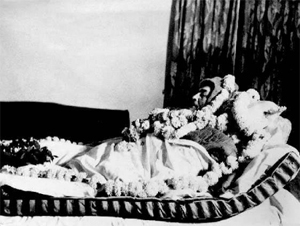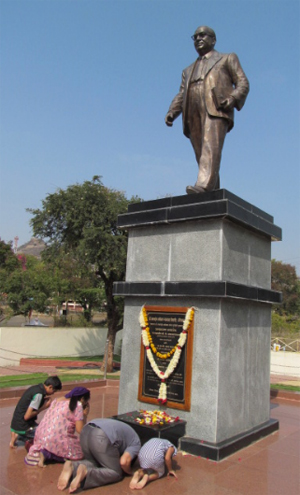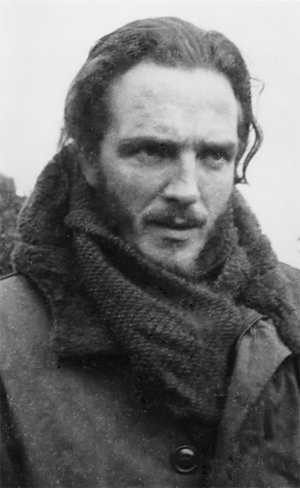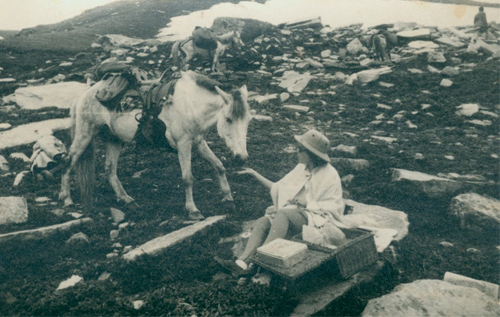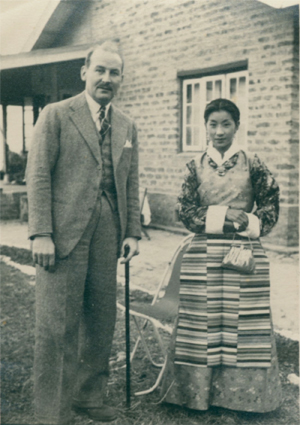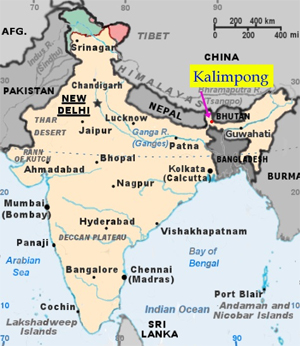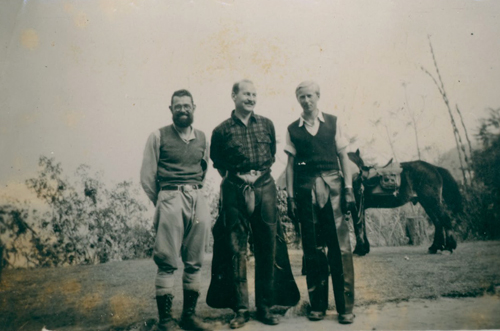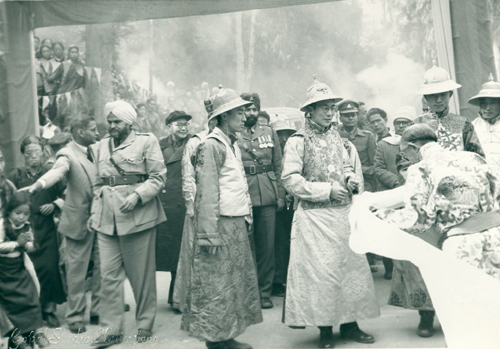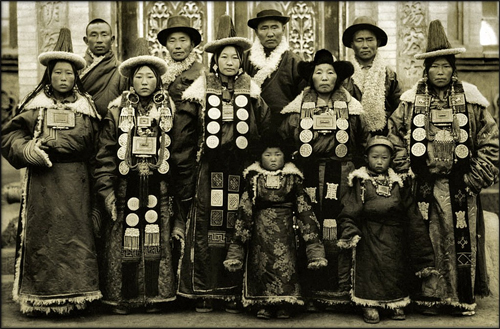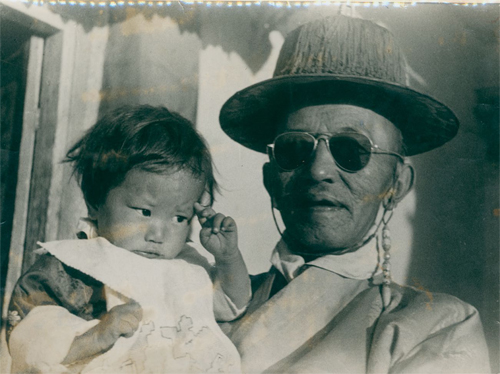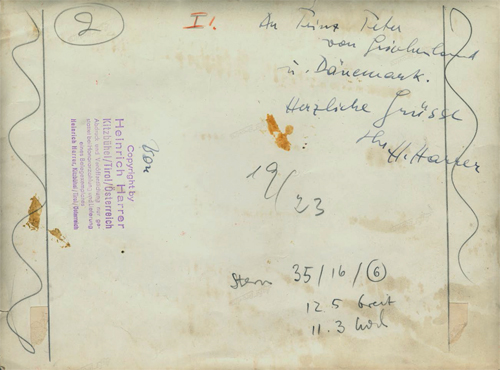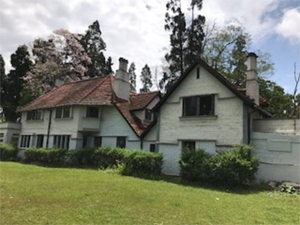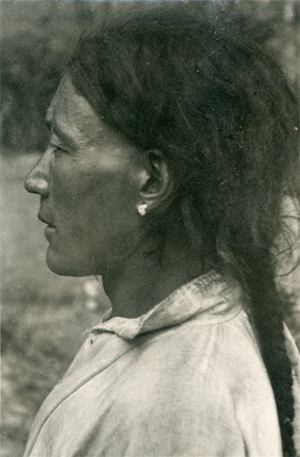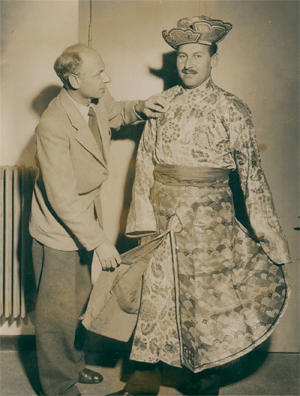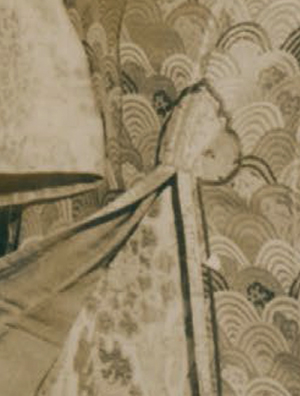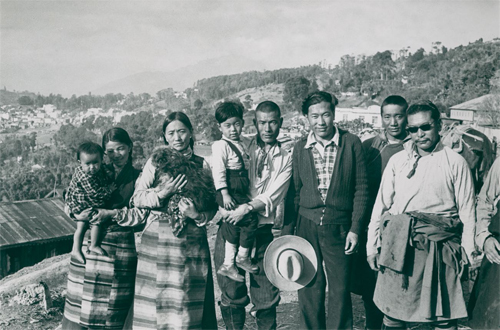Teutonic Order
by Wikipedia
Accessed: 7/16/20
“Now I shall tell you about myself, who and what I am! My name is surrounded with such hate and fear that no one can judge what is the truth and what is false, what is history and what myth. Some time you will write about it, remembering your trip through Mongolia and your sojourn at the yurta of the ‘bloody General.’”
He shut his eyes, smoking as he spoke, and tumbling out his sentences without finishing them as though some one would prevent him from phrasing them.
“The family of Ungern von Sternberg is an old family, a mixture of Germans with Hungarians—Huns from the time of Attila. My warlike ancestors took part in all the European struggles. They participated in the Crusades and one Ungern was killed under the walls of Jerusalem, fighting under Richard Coeur de Lion. Even the tragic Crusade of the Children was marked by the death of Ralph Ungern, eleven years old. When the boldest warriors of the country were despatched to the eastern border of the German Empire against the Slavs in the twelfth century, my ancestor Arthur was among them, Baron Halsa Ungern Sternberg. Here these border knights formed the order of Monk Knights or Teutons, which with fire and sword spread Christianity among the pagan Lithuanians, Esthonians, Latvians and Slavs. Since then the Teuton Order of Knights has always had among its members representatives of our family. When the Teuton Order perished in the Grunwald under the swords of the Polish and Lithuanian troops, two Barons Ungern von Sternberg were killed there. Our family was warlike and given to mysticism and asceticism.
“During the sixteenth and seventeenth centuries several Barons von Ungern had their castles in the lands of Latvia and Esthonia. Many legends and tales lived after them. Heinrich Ungern von Sternberg, called ‘Ax,’ was a wandering knight. The tournaments of France, England, Spain and Italy knew his name and lance, which filled the hearts of his opponents with fear. He fell at Cadiz ‘neath the sword of a knight who cleft both his helmet and his skull. Baron Ralph Ungern was a brigand knight between Riga and Reval. Baron Peter Ungern had his castle on the island of Dago in the Baltic Sea, where as a privateer he ruled the merchantmen of his day.
“In the beginning of the eighteenth century there was also a well-known Baron Wilhelm Ungern, who was referred to as the ‘brother of Satan’ because he was an alchemist. My grandfather was a privateer in the Indian Ocean, taking his tribute from the English traders whose warships could not catch him for several years. At last he was captured and handed to the Russian Consul, who transported him to Russia where he was sentenced to deportation to the Transbaikal. I am also a naval officer but the Russo-Japanese War forced me to leave my regular profession to join and fight with the Zabaikal Cossacks. I have spent all my life in war or in the study and learning of Buddhism. My grandfather brought Buddhism to us from India and my father and I accepted and professed it. In Transbaikalia I tried to form the order of Military Buddhists for an uncompromising fight against the depravity of revolution.”
He fell into silence and began drinking cup after cup of tea as strong and black as coffee.
“Depravity of revolution! . . . Has anyone ever thought of it besides the French philosopher, Bergson, and the most learned Tashi Lama [Panchen Lama] in Tibet?”
The grandson of the privateer, quoting scientific theories, works, the names of scientists and writers, the Holy Bible and Buddhist books, mixing together French, German, Russian and English, continued:
“In the Buddhistic and ancient Christian books we read stern predictions about the time when the war between the good and evil spirits must begin. Then there must come the unknown ‘Curse’ which will conquer the world, blot out culture, kill morality and destroy all the people. Its weapon is revolution. During every revolution the previously experienced intellect-creator will be replaced by the new rough force of the destroyer.
[Louis Tully] [Wandering around street] I am the Keymaster. The Destructor is coming. Gozer, the Traveller, the Destroyer.
[Gozer] Subcreatures! Gozer the Gozerian, Gozer the Destructor, Volguus, Zildrohar, the Traveller has come. Choose and perish. Choose. Choose the form of the destructor. The Traveller has come.
-- Ghostbusters, directed by Ivan Reitman, starring Bill Murray, Dan Aykroyd, Harold Ramis, Rick Moranis and Sigourney Weaver, written by Dan Aykroyd and Harold Ramis
He will place and hold in the first rank the lower instincts and desires. Man will be farther removed from the divine and the spiritual. The Great War proved that humanity must progress upward toward higher ideals; but then appeared that Curse which was seen and felt by Christ, the Apostle John, Buddha, the first Christian martyrs, Dante, Leonardo da Vinci, Goethe and Dostoyevsky. It appeared, turned back the wheel of progress and blocked our road to the Divinity. Revolution is an infectious disease and Europe making the treaty with Moscow deceived itself and the other parts of the world. The Great Spirit put at the threshold of our lives Karma, who knows neither anger nor pardon. He will reckon the account, whose total will be famine, destruction, the death of culture, of glory, of honor and of spirit, the death of states and the death of peoples. I see already this horror, this dark, mad destruction of humanity.”...
Well, there isn’t much left and this happens to be the most interesting. I was telling you that I wanted to found an order of military Buddhists in Russia. For what? For the protection of the processes of evolution of humanity and for the struggle against revolution, because I am certain that evolution leads to the Divinity and revolution to bestiality. But I worked in Russia! In Russia, where the peasants are rough, untutored, wild and constantly angry, hating everybody and everything without understanding why. They are suspicious and materialistic, having no sacred ideals. Russian intelligents live among imaginary ideals without realities. They have a strong capacity for criticising everything but they lack creative power. Also they have no will power, only the capacity for talking and talking. With the peasants, they cannot like anything or anybody. Their love and feelings are imaginary. Their thoughts and sentiments pass without trace like futile words. My companions, therefore, soon began to violate the regulations of the Order. Then I introduced the condition of celibacy, the entire negation of woman, of the comforts of life, of superfluities, according to the teachings of the Yellow Faith; and, in order that the Russian might be able to live down his physical nature, I introduced the limitless use of alcohol, hasheesh and opium. Now for alcohol I hang my officers and soldiers; then we drank to the ‘white fever,’ delirium tremens. I could not organize the Order but I gathered round me and developed three hundred men wholly bold and entirely ferocious. Afterward they were heroes in the war with Germany and later in the fight against the Bolsheviki, but now only a few remain.”...
“During the War we saw the gradual corruption of the Russian army and foresaw the treachery of Russia to the Allies as well as the approaching danger of revolution. To counteract this latter a plan was formed to join together all the Mongolian peoples which had not forgotten their ancient faiths and customs into one Asiatic State, consisting of autonomous tribal units, under the moral and legislative leadership of China, the country of loftiest and most ancient culture. Into this State must come the Chinese, Mongols, Tibetans, Afghans, the Mongol tribes of Turkestan, Tartars, Buriats, Kirghiz and Kalmucks. This State must be strong, physically and morally, and must erect a barrier against revolution and carefully preserve its own spirit, philosophy and individual policy. If humanity, mad and corrupted, continues to threaten the Divine Spirit in mankind, to spread blood and to obstruct moral development, the Asiatic State must terminate this movement decisively and establish a permanent, firm peace. This propaganda even during the War made splendid progress among the Turkomans, Kirghiz, Buriats and Mongols....”
“Russia turned traitor to France, England and America, signed the Brest-Litovsk Treaty and ushered in a reign of chaos. We then decided to mobilize Asia against Germany. Our envoys penetrated Mongolia, Tibet, Turkestan and China. At this time the Bolsheviki began to kill all the Russian officers and we were forced to open civil war against them, giving up our Pan-Asiatic plans; but we hope later to awake all Asia and with their help to bring peace and God back to earth. I want to feel that I have helped this idea by the liberation of Mongolia.”
He became silent and thought for a moment.
“But some of my associates in the movement do not like me because of my atrocities and severity,” he remarked in a sad voice. “They cannot understand as yet that we are not fighting a political party but a sect of murderers of all contemporary spiritual culture. Why do the Italians execute the ‘Black Hand’ gang? Why are the Americans electrocuting anarchistic bomb throwers? and I am not allowed to rid the world of those who would kill the soul of the people? I, a Teuton, descendant of crusaders and privateers, I recognize only death for murderers!”
-- Beasts, Men and Gods, by Ferdinand Ossendowski
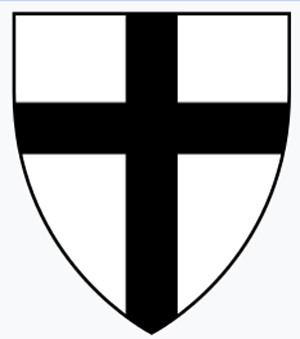
Order of Brothers of the German House of Saint Mary in Jerusalem
Coat of arms in the style of the 14th-century
Active: c. 1192 – present
Allegiance: Kingdom of Jerusalem (1190–1291); State of the Teutonic Order (1226–1525); Duchy of Prussia (1525–1701); Holy Roman Empire (1190–1806); Austrian Empire & Austria-Hungary (1804–1918); Confederation of the Rhine (1806–1813); German Confederation (1815-1866); Kingdom of Prussia (1701-1918); Kingdom of Bavaria (1805-1918); Kingdom of Württemberg (1805-1918); Grand Duchy of Baden (1806-1918); Grand Duchy of Hesse (1806-1918); North German Confederation & German Empire (1867-1918); Holy See (1190–present)
Type: Catholic religious order (1192–1929 as military order)
Headquarters: Acre (1192–1291); Venice (1291–1309); Marienburg (1309–1466); Königsberg (1466–1525); Mergentheim (1525–1809); Vienna (1809–present)
Nickname(s): Teutonic Knights, German Order
Patron: Virgin Mary; Saint Elizabeth of Hungary; Saint George
Attire: White mantle with a black cross
Commanders
First Grand Master: Heinrich Walpot von Bassenheim
Current Grand Master: Frank Bayard[1]
The Order of Brothers of the German House of Saint Mary in Jerusalem[2] (official names: Latin: Ordo domus Sanctæ Mariæ Theutonicorum Hierosolymitanorum, German: Orden der Brüder vom Deutschen Haus der Heiligen Maria in Jerusalem), commonly the Teutonic Order (Deutscher Orden, Deutschherrenorden or Deutschritterorden), is a Catholic religious order founded as a military order c. 1192 in Acre, Kingdom of Jerusalem.
The Teutonic Order was formed to aid Christians on their pilgrimages to the Holy Land and to establish hospitals. Its members have commonly been known as the Teutonic Knights, having a small voluntary and mercenary military membership, serving as a crusading military order for protection of Christians in the Holy Land and the Baltics during the Middle Ages.
Purely religious since 1810, the Teutonic Order still confers limited honorary knighthoods.[3] The Bailiwick of Utrecht of the Teutonic Order, a Protestant chivalric order, is descended from the same medieval military order and also continues to award knighthoods and perform charitable work.[4]
Name
The full name of the Order in German is Orden der Brüder vom Deutschen Haus St. Mariens in Jerusalem or in Latin Ordo domus Sanctæ Mariæ Theutonicorum Hierosolymitanorum (engl. "Order of the House of St. Mary of the Germans in Jerusalem"). Thus the term "Teutonic" echoes the German origins of the order (Theutonicorum) in its Latin name.[5] It is commonly known in German as the Deutscher Orden (official short name, literally "German Order"), historically also as Deutscher Ritterorden ("German Order of Knights"), Deutschherrenorden, Deutschritterorden ("Order of the German Knights"), Marienritter ("Knights of Mary"), Die Herren im weißen Mantel ("The lords in white capes"), etc.
The Teutonic Knights have been known as Zakon Krzyżacki in Polish ("Order of the Cross") and as Kryžiuočių Ordinas in Lithuanian, Vācu Ordenis in Latvian, Saksa Ordu or, simply, Ordu ("The Order") in Estonian, as well as various names in other languages.
History
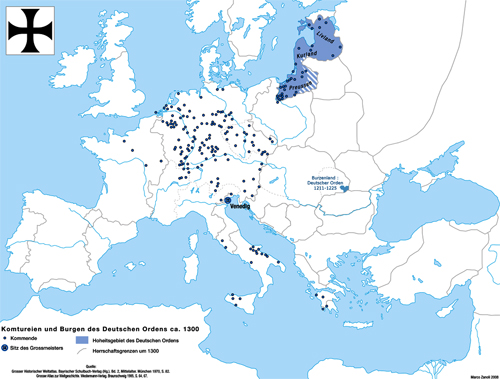
Extent of the Teutonic Order in 1300.
Formed in the year 1192 in Acre, in the Levant, the medieval Order played an important role in Outremer (the general name for the Crusader states), controlling the port tolls of Acre. After Christian forces were defeated in the Middle East, the Order moved to Transylvania in 1211 to help defend the South-Eastern borders of the Kingdom of Hungary against the Cumans. The Knights were expelled by force of arms by King Andrew II of Hungary in 1225, after attempting to place themselves under papal instead of the original Hungarian sovereignty and thus to become independent.[6]
In 1230, following the Golden Bull of Rimini, Grand Master Hermann von Salza and Duke Konrad I of Masovia launched the Prussian Crusade, a joint invasion of Prussia intended to Christianize the Baltic Old Prussians. The Knights had quickly taken steps against their Polish hosts and with the Holy Roman Emperor's support, had changed the status of Chełmno Land (also Ziemia Chelminska or Kulmerland), where they were invited by the Polish prince, into their own property. Starting from there, the Order created the independent Monastic State of the Teutonic Knights, adding continuously the conquered Prussians' territory, and subsequently conquered Livonia. Over time, the kings of Poland denounced the Order for expropriating their lands, specifically Chełmno Land and later the Polish lands of Pomerelia (also Pomorze Gdańskie or Pomerania), Kujawy, and Dobrzyń Land.
The Order theoretically lost its main purpose in Europe with the Christianization of Lithuania. However, it initiated numerous campaigns against its Christian neighbours, the Kingdom of Poland, the Grand Duchy of Lithuania, and the Novgorod Republic (after assimilating the Livonian Order). The Teutonic Knights had a strong economic base which enabled them to hire mercenaries from throughout Europe to augment their feudal levies, and they also became a naval power in the Baltic Sea. In 1410, a Polish-Lithuanian army decisively defeated the Order and broke its military power at the Battle of Grunwald (Tannenberg). However, the capital of the Teutonic Knights was successfully defended in the following Siege of Marienburg and the Order was saved from collapse.
In 1515, Holy Roman Emperor Maximilian I made a marriage alliance with Sigismund I of Poland-Lithuania. Thereafter, the empire did not support the Order against Poland. In 1525, Grand Master Albert of Brandenburg resigned and converted to Lutheranism, becoming Duke of Prussia as a vassal of Poland. Soon after, the Order lost Livonia and its holdings in the Protestant areas of Germany.[7] The Order did keep its considerable holdings in Catholic areas of Germany until 1809, when Napoleon Bonaparte ordered its dissolution and the Order lost its last secular holdings.
However, the Order continued to exist as a charitable and ceremonial body. It was outlawed by Adolf Hitler in 1938,[8] but re-established in 1945.[9] Today it operates primarily with charitable aims in Central Europe.
The Knights wore white surcoats with a black cross. A cross pattée was sometimes used as their coat of arms; this image was later used for military decoration and insignia by the Kingdom of Prussia and Germany as the Iron Cross and Pour le Mérite. The motto of the Order was: "Helfen, Wehren, Heilen" ("Help, Defend, Heal").[10]

The Order's Marienburg Castle, Monastic state of the Teutonic Knights, now Malbork, Poland
Timeline
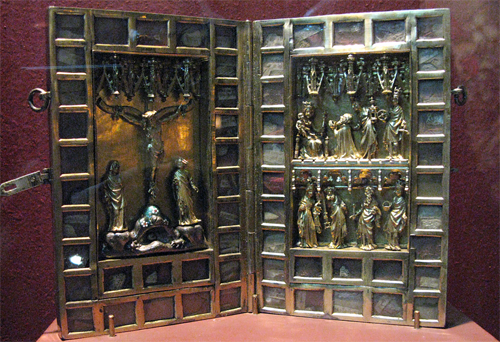
Reliquary made in Elbing in 1388 for Teutonic komtur Thiele von Lorich, military trophy of Polish king Wladislaus in 1410.
• 1190 Formation
• 1218 Siege of Damietta
• 1228–1229 The Sixth Crusade
• 1237 absorption of The Livonian Brothers of the Sword
• 1242 The Battle on the Ice
• 1242–1249 First Prussian uprising
• 1249 Treaty of Christburg with the pagan Prussians signed on February 9
• 1249 Battle of Krücken
• 1260 Battle of Durbe
• 1260–1274 Great Prussian uprising
• 1262 Siege of Königsberg
• 1263 Battle of Löbau
• 1264 Siege of Bartenstein
• 1270 Battle of Karuse
• 1271 Battle of Pagastin
• 1279 Battle of Aizkraukle
• 1291 Siege of Acre (1291)
• 1308–1309 Teutonic takeover of Danzig and Treaty of Soldin
• 1326–1332 First Polish–Teutonic War, for Kuyavia, with involvement of Lithuania and Hungary
• 1331 Battle of Płowce
• 1343 Treaty of Kalisz, exchange of Kuyavia for Kulm and other territories
• 1343–1345 St. George's Night Uprising
• 1346 Purchase of Duchy of Estonia from Denmark
• 1348 Battle of Strėva
• 1370 Battle of Rudau
• 1409–1411 Polish–Lithuanian–Teutonic War, the Teutonic knights are defeated by Polish king Władysław II Jagiełło and Lithuanian Grand duke Vytautas the Great at the Battle of Grunwald (Tannenberg) (1410)
• 1414 Hunger War
• 1422 Gollub War ending with the Treaty of Melno
• 1431–1435 Second Polish–Teutonic War
• 1454–1466 Thirteen Years' War
• 1466 Second Peace of Thorn (1466)
• 1467–1479 War of the Priests
• 1519–1521 Third Polish–Teutonic War
• 1525 the Livonian Order buys itself de facto independent from the Teutonic Order
• 1525 Order loses State of the Teutonic Order due to the Prussian Homage, it becomes Ducal Prussia
Foundation
In 1143 Pope Celestine II ordered the Knights Hospitaller to take over management of a German hospital in Jerusalem, which, according to the chronicler Jean d’Ypres, accommodated the countless German pilgrims and crusaders who could neither speak the local language nor Latin (patriæ linguam ignorantibus atque Latinam).[11] Although formally an institution of the Hospitallers, the pope commanded that the prior and the brothers of the domus Theutonicorum (house of the Germans) should always be Germans themselves, so a tradition of a German-led religious institution could develop during the 12th century in the Kingdom of Jerusalem.[12]
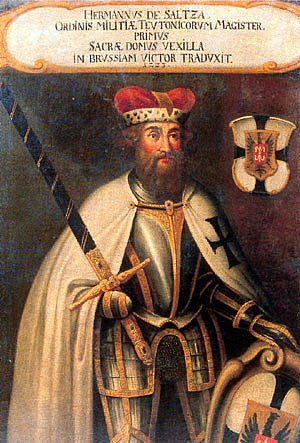
Hermann von Salza, the fourth Grand Master of the Teutonic Knights (1209–1239)
After the loss of Jerusalem in 1187, some merchants from Lübeck and Bremen took up the idea and founded a field hospital for the duration of the Siege of Acre in 1190, which became the nucleus of the order; Celestine III recognized it in 1192 by granting the monks Augustinian Rule. However, based on the model of the Knights Templar, it was transformed into a military order in 1198 and the head of the order became known as the Grand Master (magister hospitalis). It received papal orders for crusades to take and hold Jerusalem for Christianity and defend the Holy Land against the Muslim Saracens. During the rule of Grand Master Hermann von Salza (1209–1239) the Order changed from being a hospice brotherhood for pilgrims to primarily a military order.
The Order was founded in Acre, and the Knights purchased Montfort (Starkenberg), northeast of Acre, in 1220. This castle, which defended the route between Jerusalem and the Mediterranean Sea, was made the seat of the Grand Masters in 1229, although they returned to Acre after losing Montfort to Muslim control in 1271. The Order also had a castle at Amouda in Armenia Minor. The Order received donations of land in the Holy Roman Empire (especially in present-day Germany and Italy), Frankish Greece, and the Kingdom of Jerusalem.
Emperor Frederick II elevated his close friend Hermann von Salza to the status of Reichsfürst, or "Prince of the Empire", enabling the Grand Master to negotiate with other senior princes as an equal. During Frederick's coronation as King of Jerusalem in 1225, Teutonic Knights served as his escort in the Church of the Holy Sepulchre; von Salza read the emperor's proclamation in both French and German. However, the Teutonic Knights were never as influential in Outremer as the older Templars and Hospitallers.
Transylvania, Kingdom of Hungary
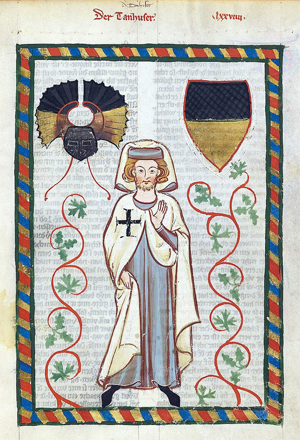
Tannhäuser in the habit of the Teutonic Knights, from the Codex Manesse
In 1211, Andrew II of Hungary accepted the services of the Teutonic Knights and granted them the district of Burzenland in Transylvania, where they would be immune to fees and duties and could enforce their own justice. Andrew had been involved in negotiations for the marriage of his daughter with the son of Hermann, Landgrave of Thuringia, whose vassals included the family of Hermann von Salza. Led by a brother called Theoderich or Dietrich, the Order defended the south-eastern borders of the Kingdom of Hungary against the neighbouring Cumans. Many forts of wood and mud were built for defence. They settled new German peasants among the existing Transylvanian Saxon inhabitants. The Cumans had no fixed settlements for resistance, and soon the Teutons were expanding into their territory. By 1220, The Teutonics Knights had built five castles, some of them made of stone. Their rapid expansion made the Hungarian nobility and clergy, who were previously uninterested in those regions, jealous and suspicious. Some nobles claimed these lands, but the Order refused to share them, ignoring the demands of the local bishop. After the Fifth Crusade, King Andrew returned to Hungary and found his kingdom full of grudge because of the expenses and losses of the failed military campaign. When the nobles demanded that he cancel the concessions made to the Knights, he concluded that they had exceeded their task and that the agreement should be revised, but did not revert the concessions. However, Prince Béla, heir to the throne, was allied with the nobility. In 1224, the Teutonic Knights, seeing that they would have problems when the Prince inherited the Kingdom, petitioned Pope Honorius III to be placed directly under the authority of the Papal See, rather than that of the King of Hungary. This was a grave mistake, as King Andrew, angered and alarmed at their growing power, responded by expelling the Teutonic Knights in 1225, although he allowed the ethnically German commoners and peasants settled here by the Order and who became part of the larger group of the Transylvanian Saxons, to remain. Lacking the military organization and experience of the Teutonic Knights, the Hungarians did not replace them with adequate defenders which had prevented the attacking Cumans. Soon, the steppe warriors would be a threat again.[13]
Prussia
Main article: Prussian Crusade
In 1226, Konrad I, Duke of Masovia in north-eastern Poland, appealed to the Knights to defend his borders and subdue the pagan Baltic Old Prussians, allowing the Teutonic Knights use of Chełmno Land (Culmerland) as a base for their campaign. This being a time of widespread crusading fervor throughout Western Europe, Hermann von Salza considered Prussia a good training ground for his knights for the wars against the Muslims in Outremer.[14] With the Golden Bull of Rimini, Emperor Frederick II bestowed on the Order a special imperial privilege for the conquest and possession of Prussia, including Chełmno Land, with nominal papal sovereignty. In 1235 the Teutonic Knights assimilated the smaller Order of Dobrzyń, which had been established earlier by Christian, the first Bishop of Prussia.
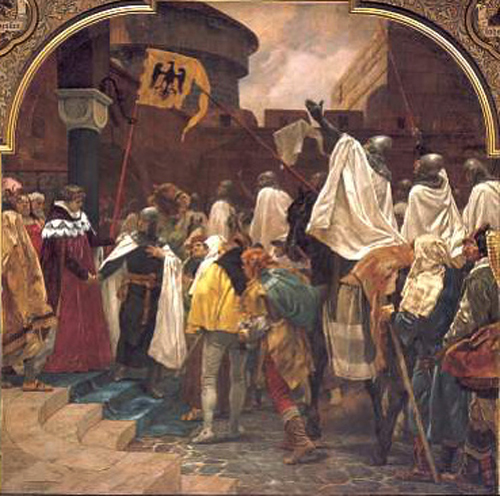
Frederick II allows the order to invade Prussia, by P. Janssen
The conquest of Prussia was accomplished with much bloodshed over more than fifty years, during which native Prussians who remained unbaptised were subjugated, killed, or exiled. Fighting between the Knights and the Prussians was ferocious; chronicles of the Order state the Prussians would "roast captured brethren alive in their armour, like chestnuts, before the shrine of a local god".[15]
The native nobility who submitted to the crusaders had many of their privileges affirmed in the Treaty of Christburg. After the Prussian uprisings of 1260–83, however, much of the Prussian nobility emigrated or were resettled, and many free Prussians lost their rights. The Prussian nobles who remained were more closely allied with the German landowners and gradually assimilated.[16] Peasants in frontier regions, such as Samland, had more privileges than those in more populated lands, such as Pomesania.[17] The crusading knights often accepted baptism as a form of submission by the natives.[18] Christianity along western lines slowly spread through Prussian culture. Bishops were reluctant to have Prussian religious practices integrated into the new faith,[19] while the ruling knights found it easier to govern the natives when they were semi-pagan and lawless.[20] After fifty years of warfare and brutal conquest, the end result meant that most of the Prussian natives were either killed or deported.[21]
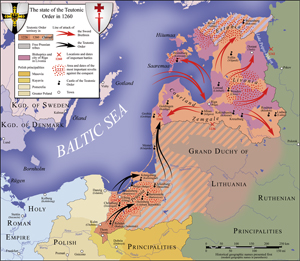
Map of the Teutonic state in 1260
The Order ruled Prussia under charters issued by the Pope and the Holy Roman Emperor as a sovereign monastic state, comparable to the arrangement of the Knights Hospitallers in Rhodes and later in Malta.
To make up for losses from the plague and to replace the partially exterminated native population, the Order encouraged immigration from the Holy Roman Empire (mostly Germans, Flemish, and Dutch) and from Masovia (Poles), the later Masurians. These included nobles, burghers, and peasants, and the surviving Old Prussians were gradually assimilated through Germanization. The settlers founded numerous towns and cities on former Prussian settlements. The Order itself built a number of castles (Ordensburgen) from which it could defeat uprisings of Old Prussians, as well as continue its attacks on the Grand Duchy of Lithuania and the Kingdom of Poland, with which the Order was often at war during the 14th and 15th centuries. Major towns founded by the Order included Allenstein (Olsztyn), Elbing (Elbląg), Klaipėda (Memel), and Königsberg, founded in 1255 in honor of King Otakar II of Bohemia on the site of a destroyed Prussian settlement.
Livonia
Main article: Livonian Crusade

Teutonic Order castle in Paide, Estonia
The Livonian Brothers of the Sword were absorbed by the Teutonic Knights in 1237, after the former had suffered a devastating defeat in the Battle of Saule. The Livonian branch subsequently became known as the Livonian Order.[22] Attempts to expand into Rus' failed when the knights suffered a major defeat in 1242 in the Battle of the Ice at the hands of Prince Alexander Nevsky of Novgorod. Over the next decades the Order focused on the subjugation of the Curonians and Semigallians. In 1260 it suffered a disastrous defeat in the Battle of Durbe against Samogitians, which inspired rebellions throughout Prussia and Livonia. After the Teutonic Knights won a crucial victory in the Siege of Königsberg from 1262 to 1265, the war had reached a turning point. The Curonians were finally subjugated in 1267 and the Semigallians in 1290.[22] The Order suppressed a major Estonian rebellion in 1343–1345, and in 1346 purchased the Duchy of Estonia from Denmark.
Against Lithuania
The Teutonic Knights began to direct their campaigns against pagan Lithuania (see Lithuanian mythology), due to the long existing conflicts in the region (including constant incursions into the Holy Roman Empire's territory by pagan raiding parties) and the lack of a proper area of operation for the Knights, after the fall of the Kingdom of Jerusalem at Acre in 1291 and their later expulsion from Hungary.[23] At first the knights moved their headquarters to Venice, from which they planned the recovery of Outremer,[24] this plan was, however, shortly abandoned, and the Order later moved its headquarters to Marienburg, so it could better focus its efforts on the region of Prussia. Because "Lithuania Propria" remained non-Christian until the end of the 14th century, much later than the rest of eastern Europe, the conflicts stretched out for a longer time, and many Knights from western European countries, such as England and France, journeyed to Prussia to participate in the seasonal campaigns (reyse) against the Grand Duchy of Lithuania. In 1348, the Order won a great victory over the Lithuanians in the Battle of Strėva, severely weakening them. The Teutonic Knights won a decisive victory over Lithuania in the Battle of Rudau in 1370.
Warfare between the Order and the Lithuanians was especially brutal. It was common practice for Lithuanians to torture captured enemies and civilians, it is recorded by a Teutonic chronicler that they had the habit of tying captured Knights to their horses and having both of them burned alive, while sometimes a stake would be driven into their bodies, or the Knight would be flayed. Lithuanian pagan customs included ritualistic human sacrifice, the hanging of widows, and the burying of a warrior's horses and servants with him after his death.[25] The Knights would also, on occasion, take captives from defeated Lithuanians, whose condition (as that of other war captives in the Middle Ages) was extensively researched by Jacques Heers.[26] The conflict had much influence in the political situation of the region, and was the source of many rivalries between Lithuanians or Poles and Germans, the degree to which it impacted the mentalities of the time can be seen in the lyrical works of men such as the contemporary Austrian poet Peter Suchenwirt.
The conflict in its entirety lasted over 200 years (although with varying degrees of aggression during that time), with its front line along both banks of the Neman River, with as many as twenty forts and castles between Seredžius and Jurbarkas alone.
Against Poland
Main article: Teutonic takeover of Danzig
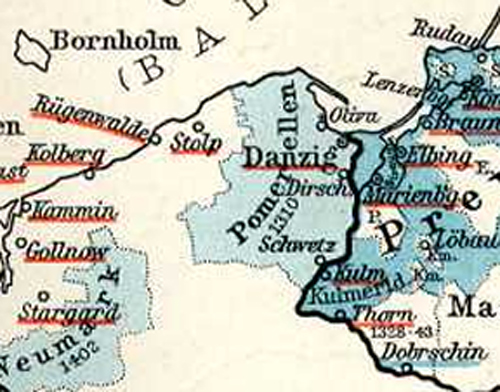
Pomerelia (Pommerellen) while part of the monastic state of the Teutonic Knights
A dispute over the succession to the Duchy of Pomerelia embroiled the Order in further conflict at the beginning of the 14th century. The Margraves of Brandenburg had claims to the duchy that they acted upon after the death of King Wenceslaus of Poland in 1306. Duke Władysław I the Elbow-high of Poland also claimed the duchy, based on inheritance from Przemysław II, but he was opposed by some Pomeranians nobles. They requested help from Brandenburg, which subsequently occupied all of Pomerelia except for the citadel of Danzig (Gdańsk) in 1308. Because Władysław was unable to come to the defense of Danzig, the Teutonic Knights, then led by Hochmeister Siegfried von Feuchtwangen, were called to expel the Brandenburgers.
The Order, under a Prussian Landmeister Heinrich von Plötzke, evicted the Brandenburgers from Danzig in September 1308 but then refused to yield the town to the Poles, and according to some sources massacred the town's inhabitants; although the exact extent of the violence is unknown, and widely recognized by historians to be an unsolvable mystery. The estimates range from 60 rebellious leaders, reported by dignitaries of the region and Knight chroniclers, to 10,000 civilians, a number cited in a papal bull (of dubious provenance) that was used in a legal process installed to punish the Order for the event; the legal dispute went on for a time, but the Order was eventually absolved of the charges. In the Treaty of Soldin, the Teutonic Order purchased Brandenburg's supposed claim to the castles of Danzig, Schwetz (Świecie), and Dirschau (Tczew) and their hinterlands from the margraves for 10,000 marks on 13 September 1309.[27]
Control of Pomerelia allowed the Order to connect their monastic state with the borders of the Holy Roman Empire. Crusading reinforcements and supplies could travel from the Imperial territory of Hither Pomerania through Pomerelia to Prussia, while Poland's access to the Baltic Sea was blocked. While Poland had mostly been an ally of the knights against the pagan Prussians and Lithuanians, the capture of Pomerelia turned the kingdom into a determined enemy of the Order.[28]
The capture of Danzig marked a new phase in the history of the Teutonic Knights. The persecution and abolition of the powerful Knights Templar, which began in 1307, worried the Teutonic Knights, but control of Pomerelia allowed them to move their headquarters in 1309 from Venice to Marienburg (Malbork) on the Nogat River, outside the reach of secular powers. The position of Prussian Landmeister was merged with that of the Grand Master. The Pope began investigating misconduct by the knights, but no charges were found to have substance. Along with the campaigns against the Lithuanians, the knights faced a vengeful Poland and legal threats from the Papacy.[29]
The Treaty of Kalisz of 1343 ended open war between the Teutonic Knights and Poland. The Knights relinquished Kuyavia and Dobrzyń Land to Poland, but retained Culmerland and Pomerelia with Danzig.

